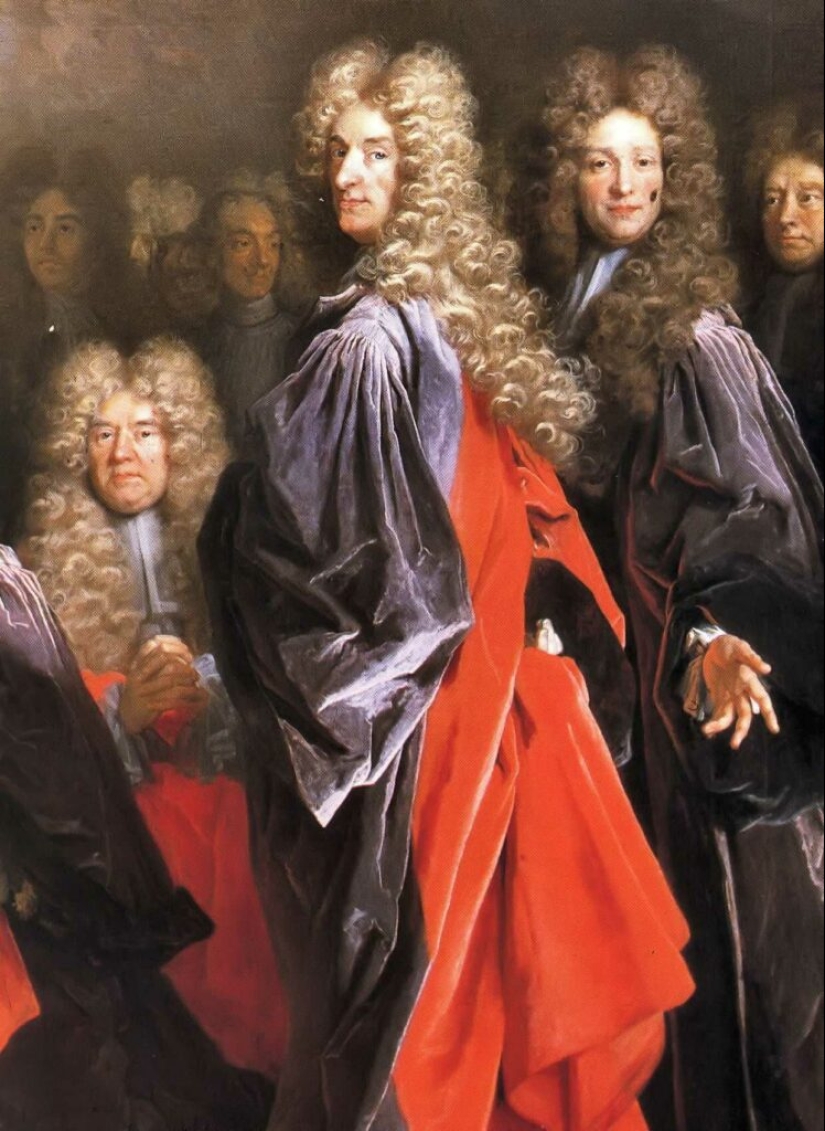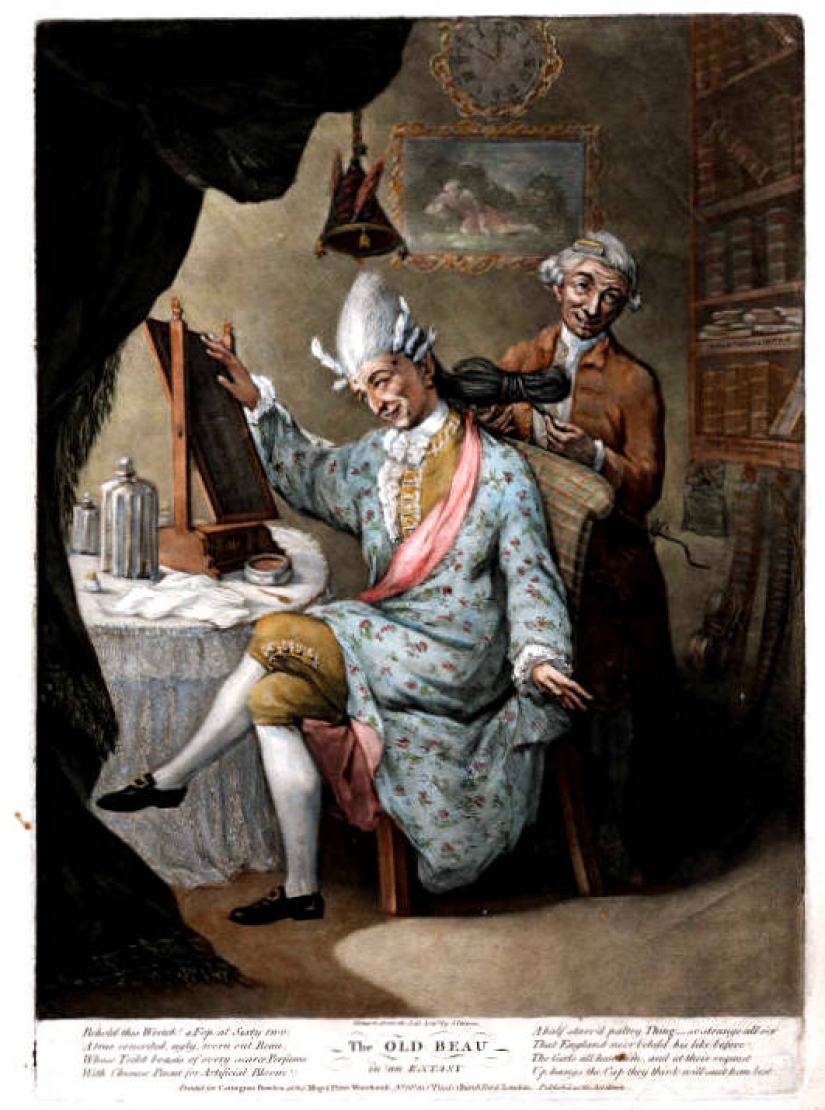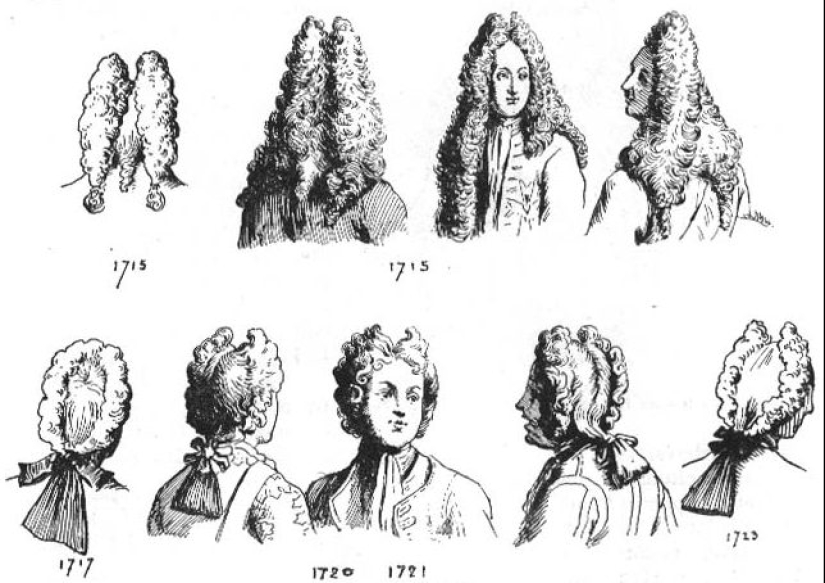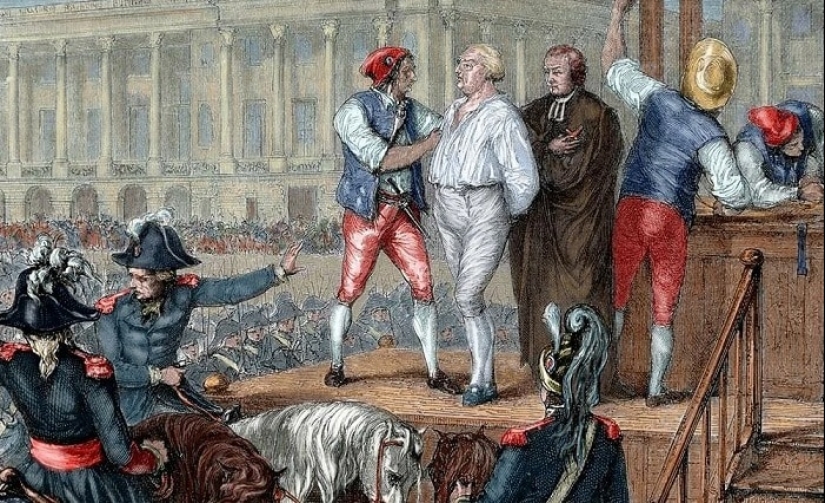How did the fashion for huge wigs appear in Europe and what does syphilis and lice have to do with it
By Pictolic https://pictolic.com/article/how-did-the-fashion-for-huge-wigs-appear-in-europe-and-what-does-syphilis-and-lice-have-to-do-with-it.htmlWe are all familiar with the image of an aristocrat of the 17th-18th century. Stockings, a lush lace frill collar, shoes with buckles, a gold-embroidered doublet and ... a huge powdered wig. The last detail always raises the greatest number of questions, because it does not look too practical. How did the fashion for men's wigs appear and what did this element of the image of a nobleman mean?

A man's wig, or as it was also called "alonge", has been an integral part of the wardrobe of any noble man for two centuries. It was worn only by aristocrats and it was almost the main sign of high status in society. But the fashion for alonji did not appear out of love for aesthetics and elegance, but due to the low level of medicine and complexes of high-born persons.

The first trendsetter of wigs was the French king Louis XIII, who lived in the 17th century. The monarch began to go bald early and was very shy about it. Dozens of magnificent alongs of different styles were made for the king, mainly from dark hair. But they gained real popularity under his son, the Sun King Louis XIV.
Another ruler named Louis started losing his hair at the age of 19. Very complex about this, the king gathered 48 of the best hairdressers in the country and ordered them to make huge wigs resembling a lion's mane. It is worth clarifying that in France they used to treat baldness quite differently than they do today. Since the time of the tribes of the Franks, a lush head of hair was considered a sign of masculinity and strength.

The bald king of France — what could be funnier in a country where long locks have been revered since ancient times, and kings never cut their hair. Approximately the same cult of hair was in neighboring Britain and Germany. At the same time, it was in the 17th-18th century that the problem of baldness became more acute in Europe than ever. There were several reasons.
First of all, men and women lost their hair due to lead and mercury. A huge number of these dangerous elements were contained in medicines and cosmetics. It was impossible to do without powder and whitewash — smallpox epidemics, periodically rolling through Europe, left permanent scars on the faces of survivors. They were covered with a thick layer of powder based on lead whitewash.

The second scourge of that time was venereal diseases. The harsh medieval principles of Christian virtues were no longer of such great importance. The aristocrats indulged in debauchery without restraint, rewarding each other with a "bad disease". By itself, syphilis does not contribute to the splendor of the hair. But he was also treated with mercury-based drugs. Those hair that was spared by the disease became a victim of mercurialism. Therefore, bald nobles were not uncommon at all.
Samuel Pepys told about the problems associated with syphilis in his diary. He was a British naval official and lived in the second half of the 17th century. Pepys' brother caught a venereal disease, but Samuel was not worried about his health, but about his own image.
As we can see, in the society of that time, hair was so important that even a bald brother could leave a stain on his reputation.

The trouble with baldness did not spare monarchs all over Europe. King Charles II of England, a cousin of Louis XIV, also went bald and, as a relative, ordered himself a whole collection of huge wigs. Kings have always been trendsetters. Therefore, it is not surprising that when two of the most powerful rulers of Europe got wigs, they began to imitate them.
Already in the second half of the 17th century, almost all the aristocrats of Europe had wigs at their disposal. Someone had one alonge, and someone ordered dozens, for all occasions. It was not a cheap pleasure, but beauty required sacrifices. Moreover, wigs have greatly simplified the lives of nobles.

Europe was plagued not only by smallpox and syphilis, but also by banal lice. The time that we think of as the age of Enlightenment was actually a period of darkness and dirt. Bathing was considered the lot of commoners, clothes were preferred not to be washed, but to be ventilated, and the stench from unwashed bodies was drowned out with perfumes. Medicine was in a poor state and, according to many, was inferior even to the ancient one.
Lice attacked kings, barons and ordinary innkeepers. If a common man could shave his head and tie a handkerchief, then an aristocrat could not afford such a liberty. The high-born shaved the remnants of their hair, which spared mercury and disease, and placed huge alongs on top of their bald heads.

Wigs were made from natural raw materials. The cheapest products were made of horsehair and goat hair, and the most expensive were made of real hair. The alongs had to be looked after. Kings and counts kept separate servants who took care of their wigs.
Wigs had to be not only combed, but also ventilated, and also covered with scented powder. If the product lost its shape, then it was taken to hairdressers and they restored it. To rid the alonji of living creatures, they were boiled or treated with various caustic compounds.

The fashion for wigs lasted until the end of the 18th century, and then declined. In France, the bourgeois revolution played a big role in its decline. Many wig owners then lost their heads, and those who miraculously preserved them were already afraid to show their belonging to the elite.
Recent articles

Most men want to see in a woman at the same time a passionate lover in bed, a good hostess in the kitchen and a faithful friend in ...

Cats are everywhere, where live and work people. There are some in the places where they seemingly did not place. For example, in ...

Photography is an art, and a person with a camera who creates something unique has every right to be called an artist. But among ...